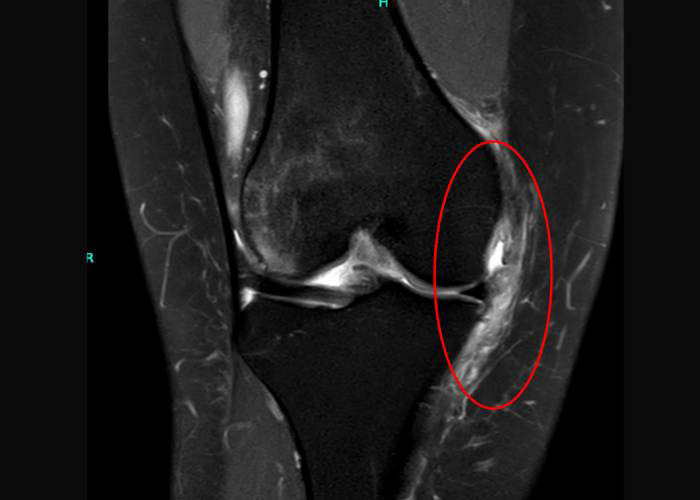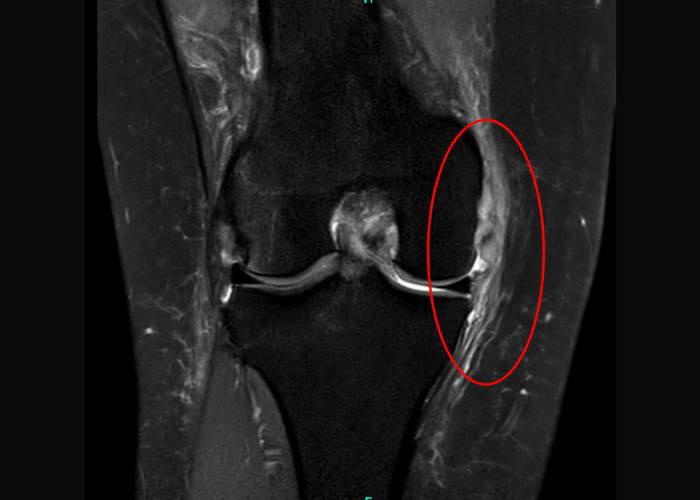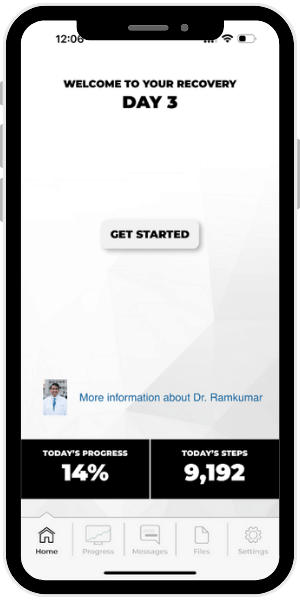MCL Repair and Reconstruction Surgeon
If you have a torn or injured MCL, you need to be seen by an MCL repair or reconstruction expert. Medial collateral ligament reconstruction surgeon, Dr. Prem N. Ramkumar has the experience and expertise in performing MCL Reconstruction surgery. He is located in Long Beach and serves patients in Los Angeles, Orange County, and surrounding Southern California areas. Contact Dr. Ramkumar’s office today.

What is the MCL?
The medial collateral ligament (MCL) is also one of the most commonly injured ligaments in the knee. The MCL is the ligament connecting the femur (thigh bone) to the tibia (shin bone) on the inside of your knee. The MCL allows you to bend, change directions, and rotate your knee while keeping it stable. It has two points of fixation on the tibia and one on the femur, making it a complex structure warranting increased scrutiny. An MCL injury occurs when extreme force is placed on the outside of the knee joint, causing the MCL on the inside of the knee to stretch or tear. A direct blow to the knee or hyperextending the knee are two ways the MCL can be injured. It is not unusual for athletes to hurt both the MCL and the ACL simultaneously. MCLs less commonly require surgery and often heal nonoperatively. In certain cases, the MCL may need to be repaired or reconstructed. Dr. Prem N. Ramkumar, MCL reconstruction surgeon, is located in Long Beach and serves patients in Los Angeles, Orange County, and surrounding Southern California areas who need MCL reconstruction surgery.
What is MCL repair and what is MCL reconstruction?
If you have knee instability or multiple knee ligament injuries involving the MCL, Dr. Ramkumar may recommend MCL repair or reconstruction surgery. Repair versus reconstruction often depends on the chronicity of the injury, the severity of the injury, and the concomitant injuries around the knee. Reconstruction involves replacing the torn MCL ligament with a graft whereas repair involves directly sewing the torn ligament back to its native position. Two types of grafts are available: one comes from the patient (autograft), the other from a donor (allograft). Since each case is unique, Dr. Ramkumar will always discuss your individual condition and treatment options with you. If you suffer only a partial tear, sometimes Dr. Ramkumar can perform an MCL repair or augmentation instead of an MCL reconstruction.


How is MCL reconstruction performed?
Medial collateral ligament (MCL) reconstruction surgery is a minimally invasive procedure with only two small incisions on the inside of the knee. Dr. Ramkumar uses tissue graft already harvested from the patient or a donor then drills small holes into the tibia (shin bone) and femur (thigh bone), so he can attach the graft using anchor points. Once the graft is in place, Dr. Ramkumar will check the knee’s range of motion and make sure the graft is secure. After closing the small incisions, the knee is dressed and then immobilized with a brace. Typically, the procedure is outpatient or day surgery, and the patient can go home the same day with pain medication and instructions to ice and elevate the knee to prevent swelling.
What is the recovery like after MCL reconstruction surgery?
The time it takes to recover from MCL reconstruction surgery depends on the patient, other injuries, and how well the post-surgical instructions are followed. Patients with MCL repair or reconstruction begin physical therapy soon after surgery and usually return to work or school in about five days. It is common to be in a knee brace and/or crutches at this time. Dr. Ramkumar will specify how long the patient should use crutches, but it is typically a week or two. Once it’s safe, the patient can put full weight back on the knee. Total recovery time is typically 12 weeks if only the MCL is involved. Healing time may be longer if other ligaments and soft tissue are involved.


